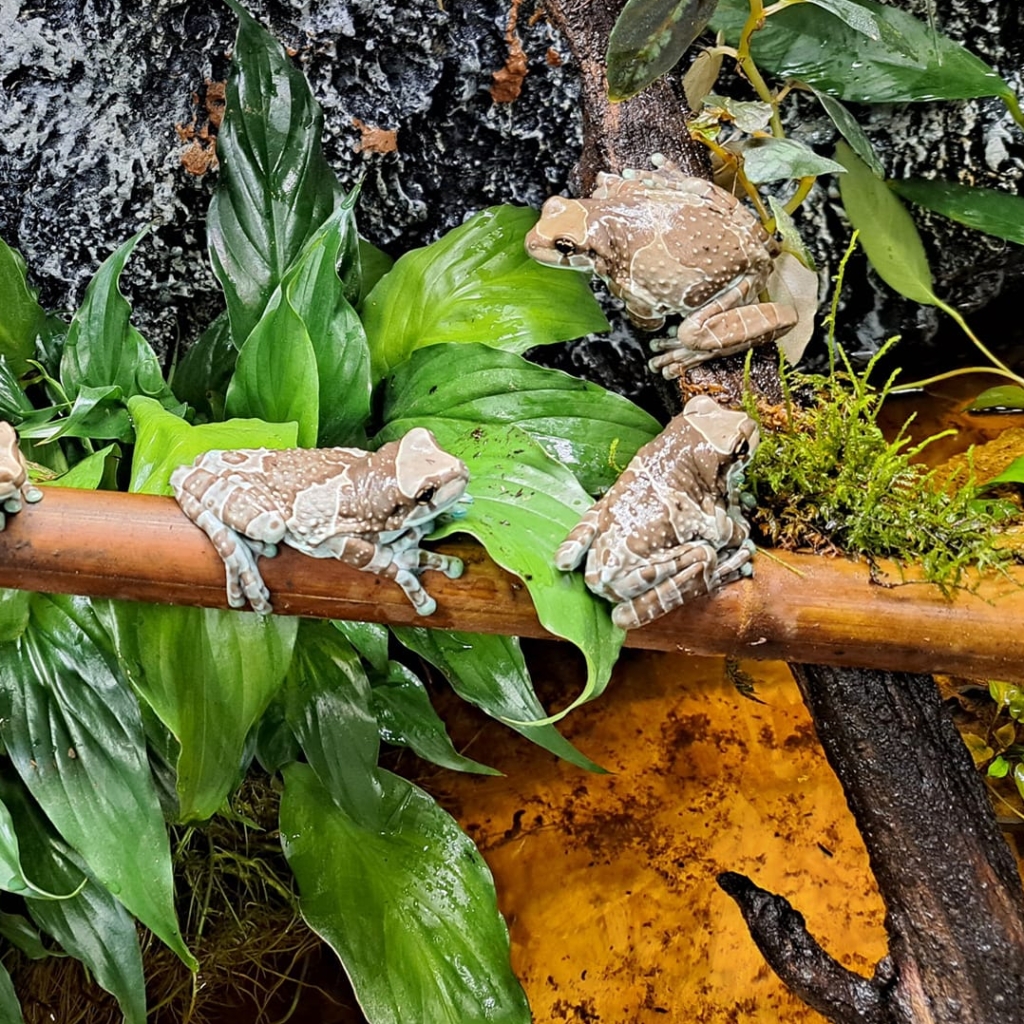Tree Frogs
What Are Tree Frogs?
Tree frogs are a captivating group of amphibians known for their vibrant colors and distinctive adaptations that allow them to thrive in arboreal environments. Unlike other frogs, many tree frogs have unique toe pads that help them climb and grasp onto branches and leaves. They are found in a variety of habitats, ranging from tropical rainforests to temperate swamps and marshes.
Fascinating Facts About Tree Frogs
- Adaptive Climbers: Their toe pads secrete a mucus that aids in gripping surfaces, making them excellent climbers.
- Diverse Vocalizations: Male tree frogs are known for their loud, unique calls used to attract mates.
- Colorful Varieties: Species like the Red-Eyed Tree Frog and the Blue Dart Frog are admired for their vivid colors and patterns.
- Sensitive to Environment: Tree frogs are often indicators of environmental health due to their permeable skin and sensitivity to pollutants and habitat changes.

Why Tree Frogs Make Great Pets
Easy to Accommodate
Tree frogs don’t require a large amount of space. A well-maintained terrarium can provide a comfortable home for them, making them ideal for pet owners who have limited space.
Awe-Inspiring and Educational
These amphibians are a window into the diversity of the natural world. Observing their behaviors and lifecycle can be a fascinating educational experience for both adults and children.
Low Noise Pets
While male tree frogs can be vocal, especially during mating season, they generally create less noise compared to common household pets like dogs or cats.
Interaction and Observation
Tree frogs are more of an observational pet, ideal for people who enjoy watching and learning about animal behavior without the need for intense interaction.
Tree Frog Care 101
Setting Up a Terrarium
- Size and Environment: A vertical terrarium is ideal, as it mimics their natural tree-dwelling habitat. The size depends on the species and number of frogs, but a 10-20 gallon tank is a good start.
- Plants and Decor: Include live plants, branches, and hiding spots to create a naturalistic environment. This also helps maintain humidity.
Diet and Feeding
- What They Eat: Tree frogs primarily eat insects like crickets, flies, and worms. Feed them 2-3 times a week.
- Supplements: Dust the insects with calcium and vitamin supplements to ensure a balanced diet.
Temperature and Humidity
- Ideal Conditions: Maintain a temperature of 70-80°F and humidity around 50-80%. Use a thermometer and hygrometer to monitor these conditions.
- Lighting: Provide a day/night cycle with light, but avoid direct sunlight which can overheat the terrarium.
Health and Wellbeing
- Cleanliness: Regularly clean the terrarium to prevent mold and bacteria growth.
- Signs of Good Health: Active, clear-eyed, and regular eating habits are signs of a healthy tree frog.
- Veterinary Care: Consult a vet for regular check-ups or if you notice any signs of illness.